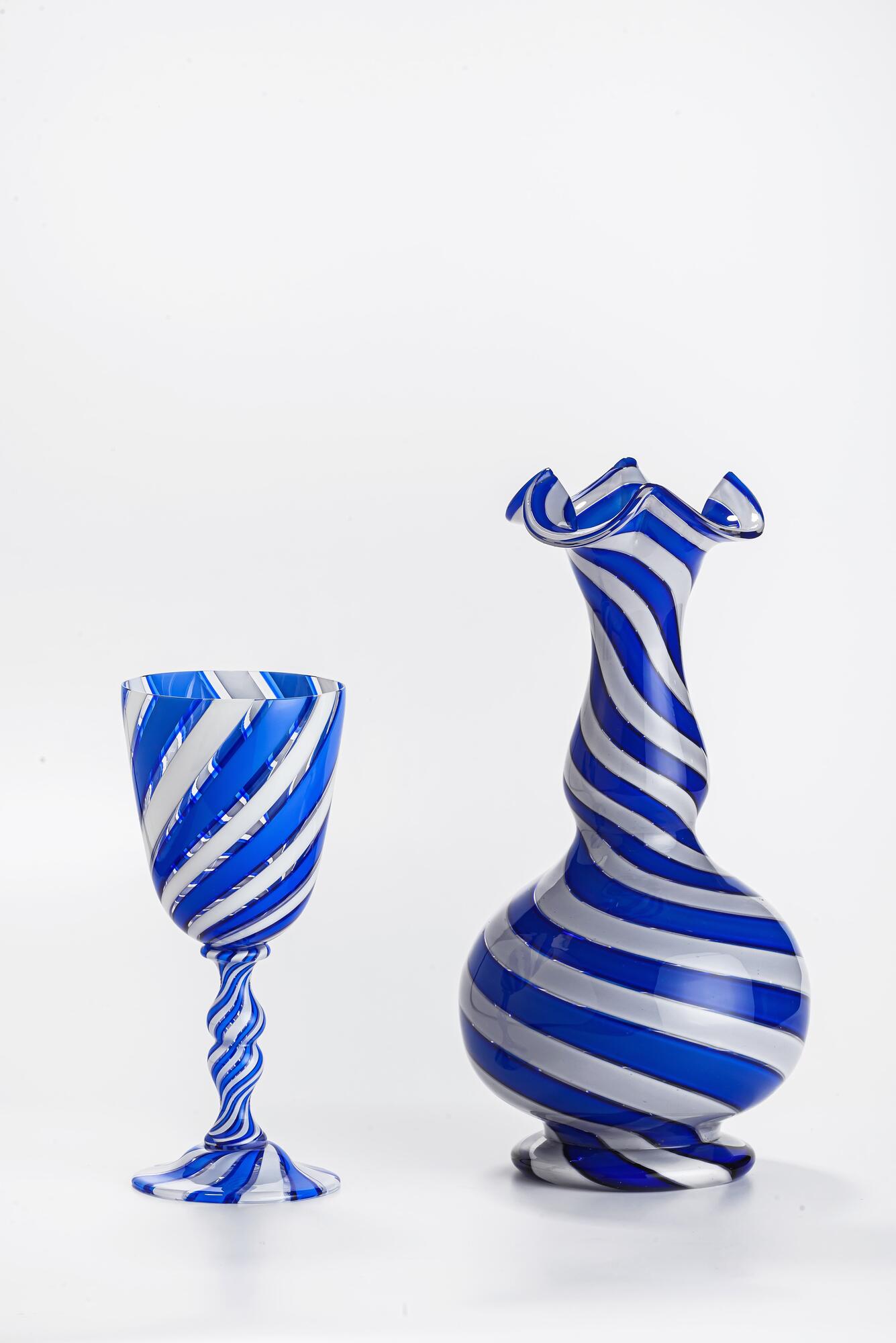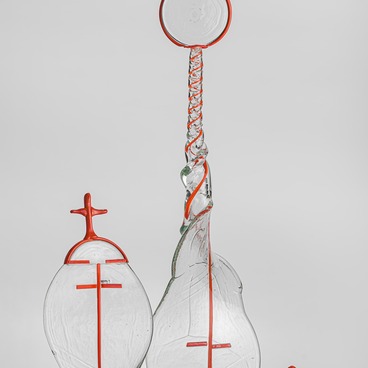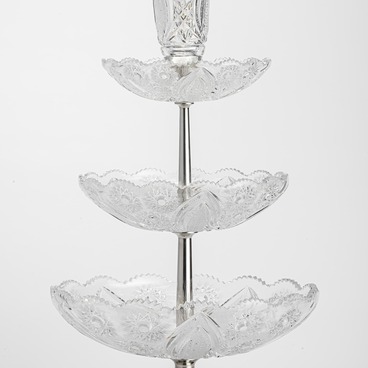The Venetian or filigree glass technique appeared in Italy. Venetian glassware included not only vessels, but also jewelry and mirrors. The production of these objects started in the late 18th century. All glassblowers who had mastered this technique had to move to the separate island of Murano. They were not allowed to leave, and if they tried to they would be executed. However, the craftsmen seized every opportunity to set themselves free, so the Venetian secret glassmaking technique became known in Europe.
Initially the method made use of clear colorless glass. Glass threads (they were usually made from milk glass) were twisted to create various patterns.
By the 1830s the hereditary craftsmen of the Nikolsko-Bakhmetevsky factory had mastered most of the techniques, including the filigree glass technique, which was considered to be among the most sophisticated and laborious ones. To get a “thread” numerous glass canes are prepared in advance. Then they are put into special grooves in the mold or arranged in a proper way on a metal plate. In the first case, the glass blank is blown into the mold; in the second case, it is rolled over the canes. Hot glass makes the canes melt and they stick around the glass core. Then they are covered with one more glass layer on top, so that the “Venetian thread” happens to be inside the glass and not on its surface.
To create this vase and stemmed glass milk and dark blue glass canes were used. The vase that has a round body, a pear-shaped neck and a ruffled rim was hand blown as a whole piece. The three parts of the glass — the base, the stem and the oval body — were blown separately. Then the details were heated and joined.
The Vertuzaevs, hereditary glass blowers at the factory, specialized in the Venetian glass technique. Mikhail Sergeyevich Vertuzaev was the last representative of this family — he worked at the Red Giant factory in the first half of the 20th century. In 1939, he received an honorary title of a master-artist for reviving the filigree technique. In 1940, the State Publishing House of Light Industry published his brochure “The Production of ‘Venetian Thread’ Glassware”. The factory produced filigree glassware until the 1990s.
Initially the method made use of clear colorless glass. Glass threads (they were usually made from milk glass) were twisted to create various patterns.
By the 1830s the hereditary craftsmen of the Nikolsko-Bakhmetevsky factory had mastered most of the techniques, including the filigree glass technique, which was considered to be among the most sophisticated and laborious ones. To get a “thread” numerous glass canes are prepared in advance. Then they are put into special grooves in the mold or arranged in a proper way on a metal plate. In the first case, the glass blank is blown into the mold; in the second case, it is rolled over the canes. Hot glass makes the canes melt and they stick around the glass core. Then they are covered with one more glass layer on top, so that the “Venetian thread” happens to be inside the glass and not on its surface.
To create this vase and stemmed glass milk and dark blue glass canes were used. The vase that has a round body, a pear-shaped neck and a ruffled rim was hand blown as a whole piece. The three parts of the glass — the base, the stem and the oval body — were blown separately. Then the details were heated and joined.
The Vertuzaevs, hereditary glass blowers at the factory, specialized in the Venetian glass technique. Mikhail Sergeyevich Vertuzaev was the last representative of this family — he worked at the Red Giant factory in the first half of the 20th century. In 1939, he received an honorary title of a master-artist for reviving the filigree technique. In 1940, the State Publishing House of Light Industry published his brochure “The Production of ‘Venetian Thread’ Glassware”. The factory produced filigree glassware until the 1990s.





